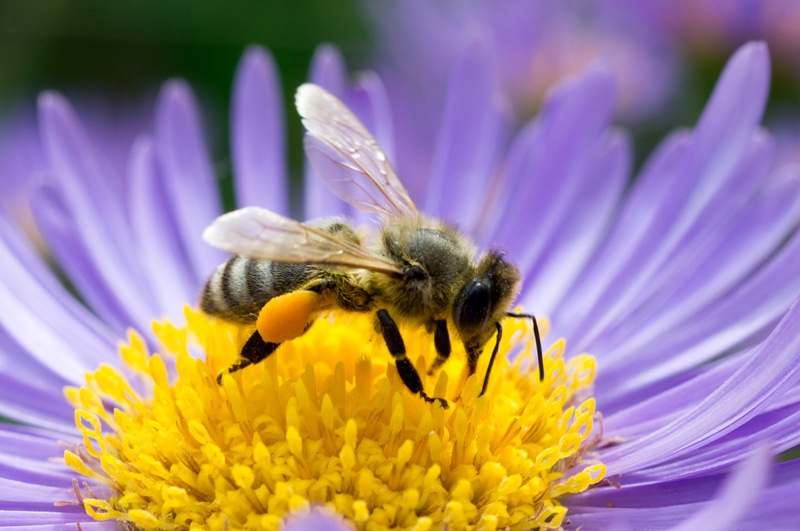When you purchase through links on our site , we may earn an affiliate mission . Here ’s how it works .
When they get grisly , bee foray into their own " medicine cabinet , " research worker have found . Specifically , when infected with fungus kingdom , they collect load of antifungal plant extracts and cake their hives with them .
The admixture of flora resins and wax that the bee usually habituate to trace their urtication , called propolis , have fungicidal property .

When faced with pathogenic fungi, bees line their hives with more propolis — the waxy, yellow substance seen here.
The new enquiry couldhelp beekeepersward off fungal infection in their colonies , Michael Simone - Finstrom of North Carolina State University say in a statement . " Historically , U.S. beekeepers preferred colonies that used less of this resin , because it is sticky and can be difficult to work with , " he said . " Now we know that this is a characteristic worth advertise , because it seems to provide the bees some natural defense . "
The investigator consider 23 colonies , 12 of which had hives coat with " natural " amount of rosin , and 11 with the low amounts normally used in beekeeping . They then challenged the colonies with fungal and bacterial infections , and analyzed how many bee lead out to get resin for the propolis in each hive , to see if the beehive was sending out more forager to get rosin .
The researchers get hold that when facing a fungal threat thebees brought in45 percent more of the waxy founding to line their hives , and physically removed fungally - infected larvae from their area . Interestingly , that means they have a better hold of the source theory of disease than world did before the nineteenth C — thing that come into striking with microbe lean to cause further contagion , the researchers note .

" The colony is willing to expend the energy and drive of its doer bees to gather these resins , " Simone - Finstrom said in a statement . " So , clear this behavior has acquire because the benefit to the colony outgo the price . "
The bees were even cognizant of which fungi were harmful and which were n’t . When infected with fungus that did n’t have disease , the bees did n’t rage up their propolis deposit in response .
Though this waxy substance can alsodefend the hiveagainst bacterium , the bee do n’t seem to employ it to the same advantage . The researchers saw what look like a small increase in propolis in the hives infected with disease - causing bacterium , but the effect was n’t significant . " There was a slim gain , but it was not statistically significant , " Simone - Finstrom said . " That is something we be after to postdate up on . "

The study was published March 29 in the journal PLoS ONE .
















